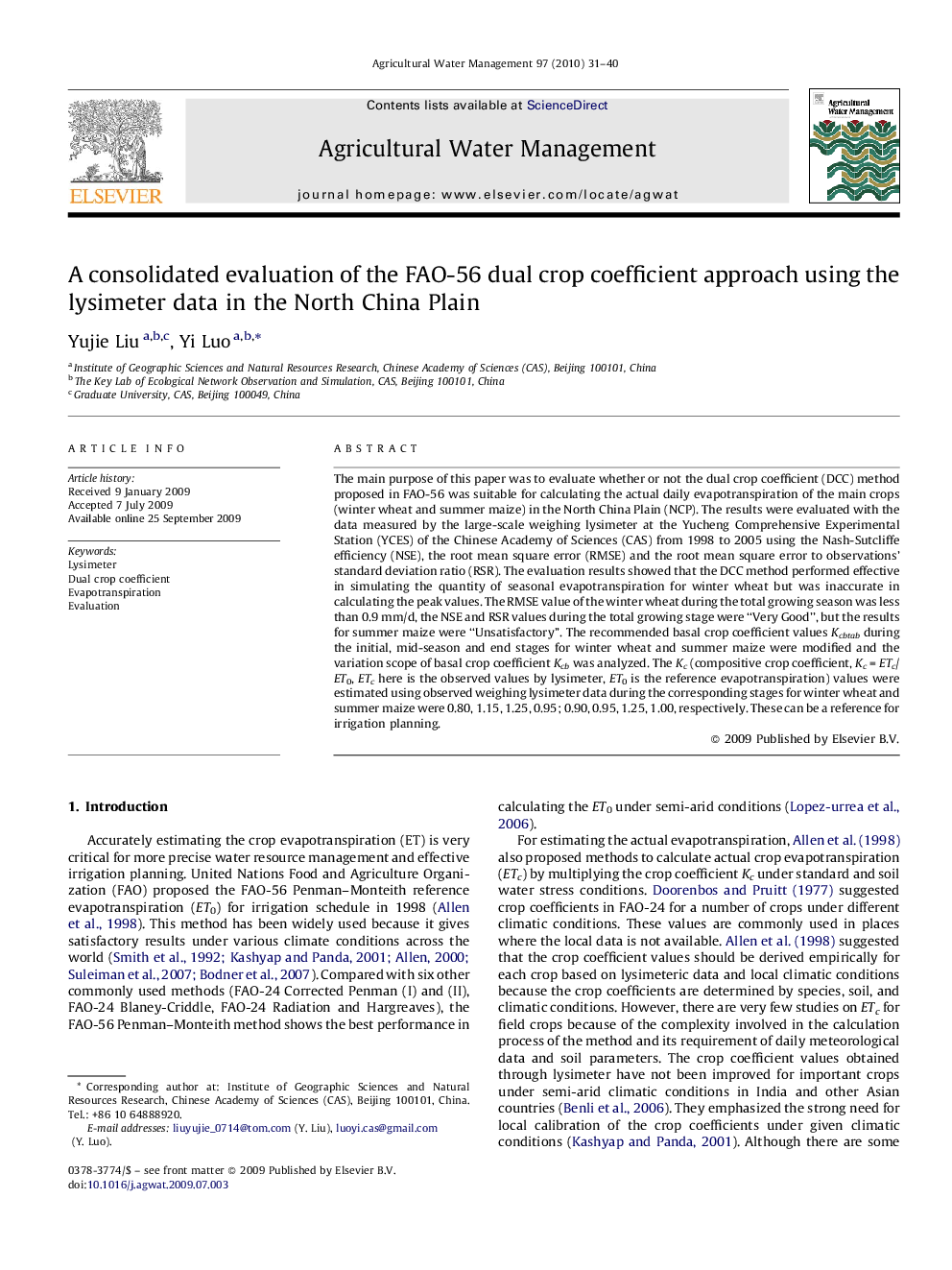| کد مقاله | کد نشریه | سال انتشار | مقاله انگلیسی | نسخه تمام متن |
|---|---|---|---|---|
| 4479803 | 1316459 | 2010 | 10 صفحه PDF | دانلود رایگان |

The main purpose of this paper was to evaluate whether or not the dual crop coefficient (DCC) method proposed in FAO-56 was suitable for calculating the actual daily evapotranspiration of the main crops (winter wheat and summer maize) in the North China Plain (NCP). The results were evaluated with the data measured by the large-scale weighing lysimeter at the Yucheng Comprehensive Experimental Station (YCES) of the Chinese Academy of Sciences (CAS) from 1998 to 2005 using the Nash-Sutcliffe efficiency (NSE), the root mean square error (RMSE) and the root mean square error to observations’ standard deviation ratio (RSR). The evaluation results showed that the DCC method performed effective in simulating the quantity of seasonal evapotranspiration for winter wheat but was inaccurate in calculating the peak values. The RMSE value of the winter wheat during the total growing season was less than 0.9 mm/d, the NSE and RSR values during the total growing stage were “Very Good”, but the results for summer maize were “Unsatisfactory”. The recommended basal crop coefficient values Kcbtab during the initial, mid-season and end stages for winter wheat and summer maize were modified and the variation scope of basal crop coefficient Kcb was analyzed. The Kc (compositive crop coefficient, Kc = ETc/ET0, ETc here is the observed values by lysimeter, ET0 is the reference evapotranspiration) values were estimated using observed weighing lysimeter data during the corresponding stages for winter wheat and summer maize were 0.80, 1.15, 1.25, 0.95; 0.90, 0.95, 1.25, 1.00, respectively. These can be a reference for irrigation planning.
Journal: Agricultural Water Management - Volume 97, Issue 1, January 2010, Pages 31–40